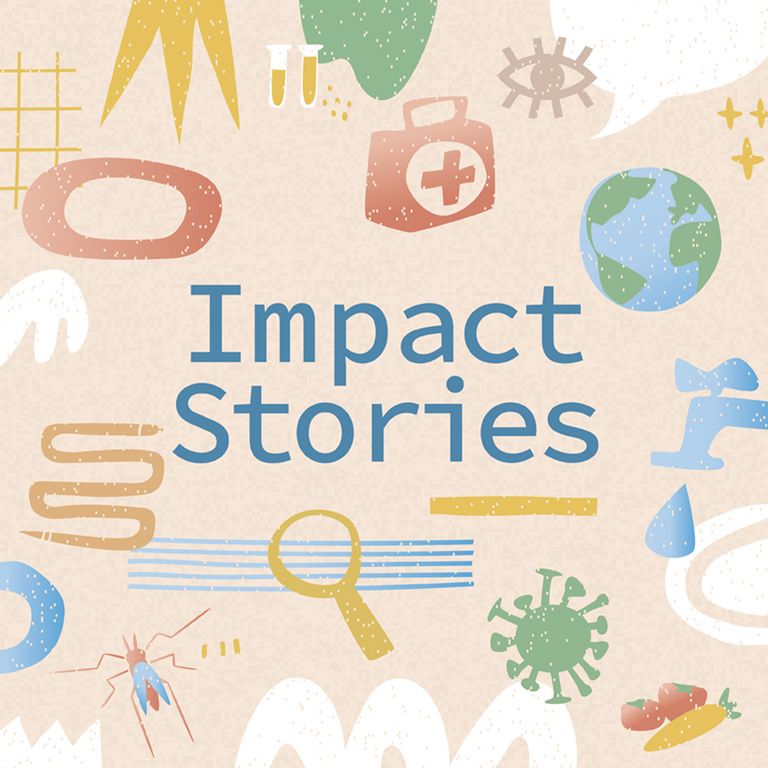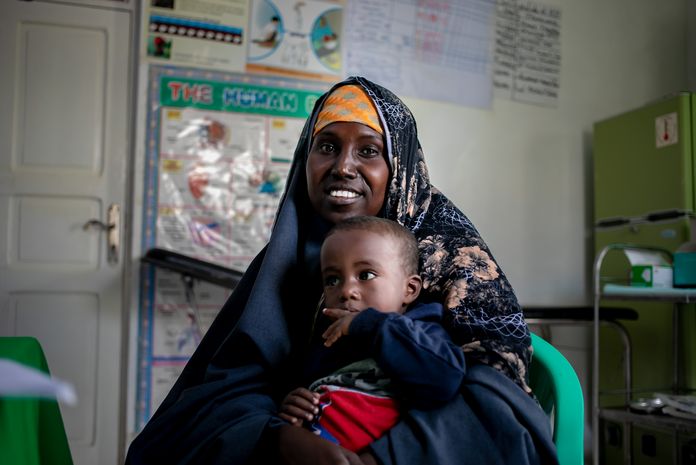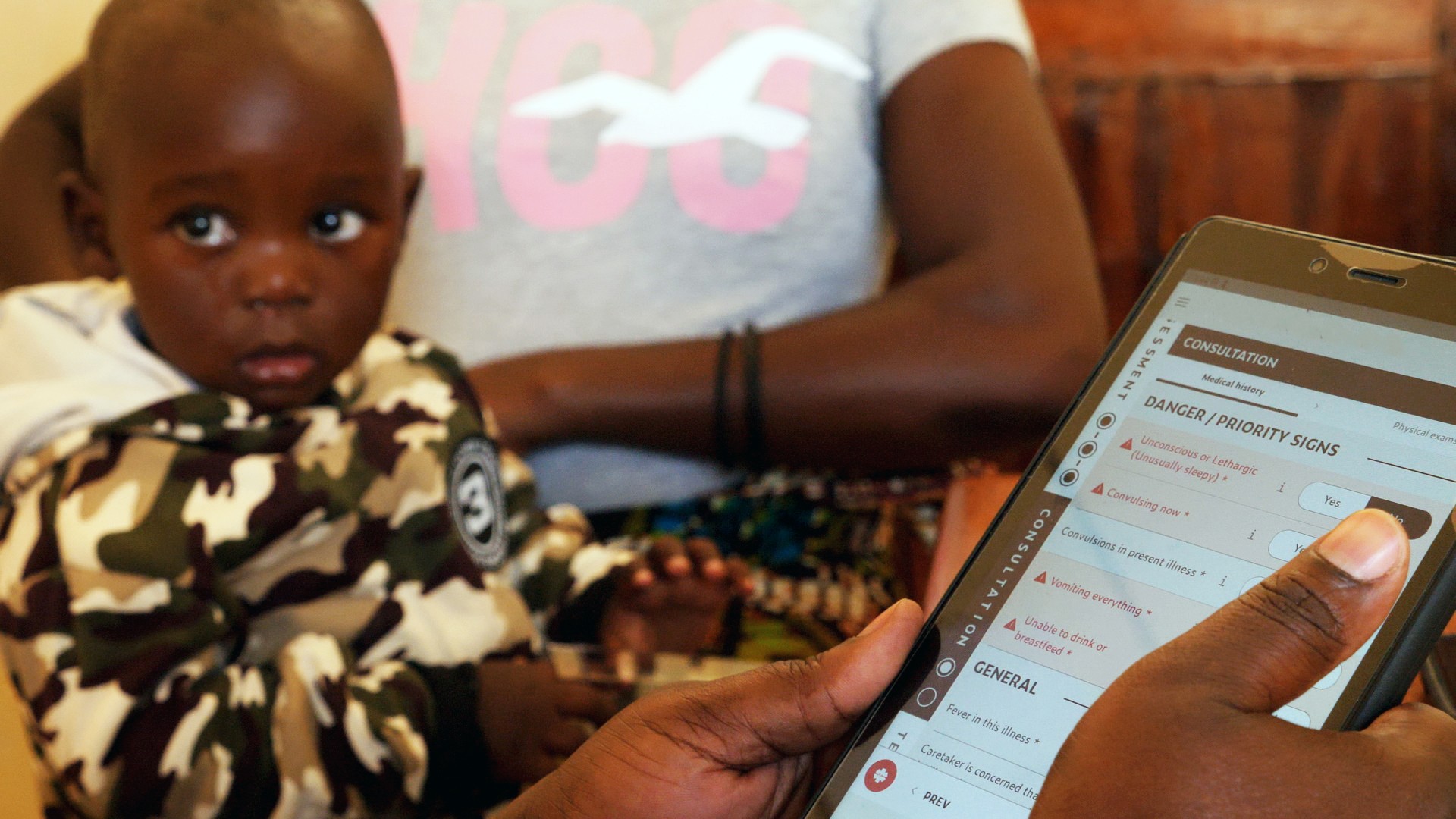


Timely and accurate diagnosis of childhood illnesses can mean the difference between life and death. Yet in many low-resource settings, frontline health workers struggle with overwhelming patient loads, limited training and inadequate infrastructure. As a result, millions of preventable child deaths occur each year. To tackle this issue, Swiss TPH is developing practical digital tools to support primary care and improve child health.
In 2022 alone, 4.9 million children under the age of five died according to the World Health Organization (WHO), mainly from treatable conditions such as pneumonia, diarrhoea, and malaria. Over 80% of these deaths occurred in sub-Saharan Africa and South Asia, where access to quality healthcare remains limited. The challenge is not so much the availability of treatments but ensuring they reach those who need them most. To achieve this, healthcare professionals must be able to make accurate diagnoses and competent treatment decisions. Inadequate diagnosis can lead to serious illness or death, while over-diagnosis contributes to antibiotic overuse and antimicrobial resistance.
This is where clinical decision support systems (CDSS) come in. CDSS are digital tools that support medical staff in diagnosing and treating children according to evidence-based guidelines. By integrating patient data with medical protocols, CDSS improve diagnostic accuracy, optimise treatment, reduce unnecessary antibiotic use, and generate valuable data for health system planning. Designed for primary care, CDSS enhance – rather than replace – clinical judgement, keeping healthcare providers central to decision making while improving the overall care quality.
Digital tools for smarter care
Swiss TPH is a pioneer in CDSS development, driving key initiatives to improve child health. As a co-founder of the CDSS Community of Practice, we develop open source solutions, support WHO’s SMART guidelines (standardised, machine-readable clinical protocols) and provide training in digital health and CDSS use. One of our key projects is ALMANACH (ALgorithm for the MANagement of CHildhood Illness), developed by Swiss TPH over 15 years ago to guide health workers step-by-step through the WHO guidelines for Integrated Management of Childhood Illness (IMCI) in primary healthcare. Continuously updated and enhanced, ALMANACH integrates new recommendations and can be adapted to country-specific needs. In collaboration with the International Committee of the Red Cross (ICRC) and local health authorities, it has been piloted in Afghanistan and implemented in Nigeria, Somalia, and most recently Libya.
The results are promising: in Somalia, a study showed that antibiotic prescribing fell from 58.1% to just 16%, with a 30-fold reduction for upper respiratory tract infections, while adherence to IMCI guidelines increased significantly.
Effectiveness evaluation in Nigeria showed that children seeking care in ALMANACH-facilities had a significantly higher rate of (caregiver-reported) recovery within a week of treatment and profited from improved quality of care, such as more accurate antibiotic prescription or better communication. In Libya, the tool is now being scaled up and handed over to the Ministry of Health, where it can once again demonstrate its impact and deliver its contribution to universal health coverage.
Integrating pulse oximetry
Another impactful project working on transforming paediatric care is the Tools for Integrated Management of Childhood Illness (TIMCI) project, led by PATH. It’s aim is to improve the detection and treatment of severe illness by integrating pulse oximetry and digital clinical decision support algorithms into primary healthcare. Pulse oximetry is a low-cost, non-invasive method for detecting hypoxaemia (low oxygen levels in the blood). The condition is strongly linked to child morbidity and mortality but often goes undetected in low-resource settings due to a lack of diagnostic tools. TIMCI worked in Kenya, Senegal, Tanzania and India, equipping health workers with pulse oximeters to enable more accurate diagnoses and timely referrals. Swiss TPH is leading a large-scale impact study to evaluate the project’s effectiveness, cost-effectiveness and scalability. The results will help shape policy for integrating these life-saving tools into health systems worldwide.
Combining CDSS with rapid diagnostic tests
Another major initiative is the DYNAMIC study, a digital health project led by Unisanté and Swiss TPH, focused on improving child healthcare and promoting responsible antibiotic use in Tanzania and Rwanda. It combines ePOCT+, a smart clinical decision support algorithm, with rapid diagnostic tests to help health workers make accurate diagnoses and follow treatment guidelines. Studies in health facilities using ePOCT+ have shown a major drop in antibiotic prescriptions – from 70.1% to 23.2% in Tanzania and from 70.5% to 24.5% in Rwanda – without affecting cure rates. Originally developed for countries in the Global South, the solution is now being adopted in the Swiss canton of Vaud through a reverse innovation approach. Swiss TPH is also working to extend the software’s functionality and build an open source community by coordinating multiple contributing organisations.

Three approaches, one goal
ALMANACH, TIMCI and DYNAMIC all enhance child healthcare through digital clinical decision support. A key benefit of these projects is their ability to generate real-time data, enhancing clinical decision-making and enabling continuous refinement of the tools. This constant flow of information supports healthcare providers in delivering timely and accurate care while simultaneously driving continuous improvements of the tools making the CDSS smarter over time and further improving healthcare delivery.
Opportunities and challenges
Despite their transformative potential, CDSS are not a one-size-fits-all solution. Infrastructure limitations, maintenance costs, and the need for continuous workforce training pose challenges. Ensuring interoperability with existing health systems and user acceptance is crucial for long-term adoption. While CDSS assist in decision-making, they do not replace clinical judgement – health personnel must have the skills and confidence to interpret data and make informed choices. Strong partnerships, training and support, as well as sustained investment can help overcome these barriers, ensuring broader impact and ultimately contribute to improving survival rates for millions of children worldwide.